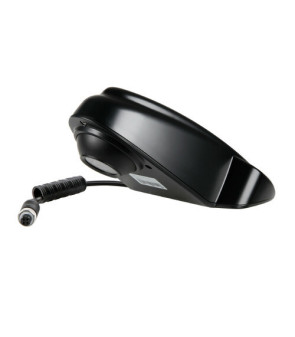
One of the primary benefits of ADAS data is the enhancement of vehicle safety. By analyzing real-time data,
Portable adas can predict and prevent potential accidents, alerting drivers to hazards and even taking corrective actions in emergencies.
The journey of ADAS from a luxury feature to a standard in modern vehicles is remarkable. Over the years, these systems have become more sophisticated, thanks to advancements in sensor technology and data processing capabilities. Today, ADAS is an integral part of the modern driving experience, aiming to reduce human error and enhance road safety.
Real-Life Consequences and Case Studies
There have been instances where uncalibrated ADAS systems have led to accidents, underscoring the importance of ensuring these systems are accurately calibrated.
Several case studies highlight the successful application of ADAS data. These include instances where ADAS has significantly reduced road accidents, improved traffic flow, and enhanced the overall driving experience. Analyzing these success stories provides valuable lessons and insights for future developments in the field.
ADAS Sensor Maintenance Tips
Regular maintenance and calibration of ADAS sensors are essential for their optimal operation. Simple steps can significantly extend the life and effectiveness of these crucial components.
Advanced Driver-Assistance Systems (ADAS) represent a significant leap forward in automotive safety and efficiency. These systems, utilizing an array of sensors, play a crucial role in enhancing driving safety by providing critical functionalities such as automatic braking, lane keeping assistance, and adaptive cruise control. However, what happens when these sophisticated sensors malfunction? Is it safe to continue driving, or does such a scenario pose a risk to the driver, passengers, and other road users?
Advanced Driver Assistance Systems (ADAS) have revolutionized the automotive industry, marking a significant step towards autonomous driving. These systems employ an array of sensors and cameras to gather real-time data, providing drivers with essential safety features such as collision avoidance, lane departure warnings, and adaptive cruise control. The evolution of ADAS is not just a technological leap but also a cultural shift in how we perceive vehicle safety and driving convenience.
12. Driver Monitoring System
Going a step further in monitoring driver attention, camera sensors analyze whether the driver’s focus is on the road or wandering. These systems can issue alerts, including audible warnings, steering wheel vibrations, or flashing lights, and in some cases, even stop the vehicle altogether.
Another significant opportunity lies in using ADAS data for traffic management and urban planning. By analyzing traffic flow and driving patterns, city planners can make informed decisions to improve road infrastructure and reduce congestion.
How to Ensure Proper Calibration
Ensuring your vehicle’s ADAS system is properly calibrated after a windshield replacement involves selecting a reputable service provider and knowing the right questions to ask. This section provides guidance on making informed choices.
Introduction
The dawn of Advanced Driver Assistance Systems (ADAS) marks a pivotal shift in the automotive landscape, promising to enhance road safety, reduce accidents, and pave the way for autonomous vehicles. However, the adoption and cost of these technologies are significantly influenced by government policies. Through a blend of regulatory frameworks, financial incentives, and public-private partnerships, governments worldwide play a crucial role in steering the direction and pace of ADAS integration into the market.
Training and ADAS: The Need for a New Curriculum
As ADAS becomes more prevalent, there’s a growing need to incorporate it into driver training programs. This includes educating drivers about the capabilities and limitations of these systems, ensuring they can use ADAS effectively without overreliance.
Introduction to ADAS
Advanced Driver Assistance Systems (ADAS) have revolutionized the automotive industry. They encompass a range of systems designed to increase vehicle safety and make driving more comfortable. From adaptive cruise control to lane-keeping assist, these features have gradually become the norm in modern vehicles. However, as ADAS technology evolves, it’s crucial to understand its implications on driver behavior and skills.
Causes of ADAS Sensor Malfunctions
Various factors can lead to ADAS sensor malfunctions, from simple dirt and debris obstructing the sensor’s view to more complex electrical issues. Understanding these causes can help in preventing potential malfunctions.
Legal and Insurance Implications
Neglecting ADAS calibration can also have legal and insurance repercussions. In the event of an accident caused by a malfunctioning ADAS system, the lack of calibration could be deemed negligent, affecting insurance claims and liability.
